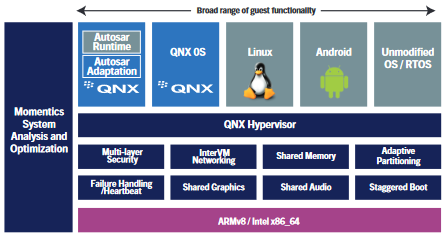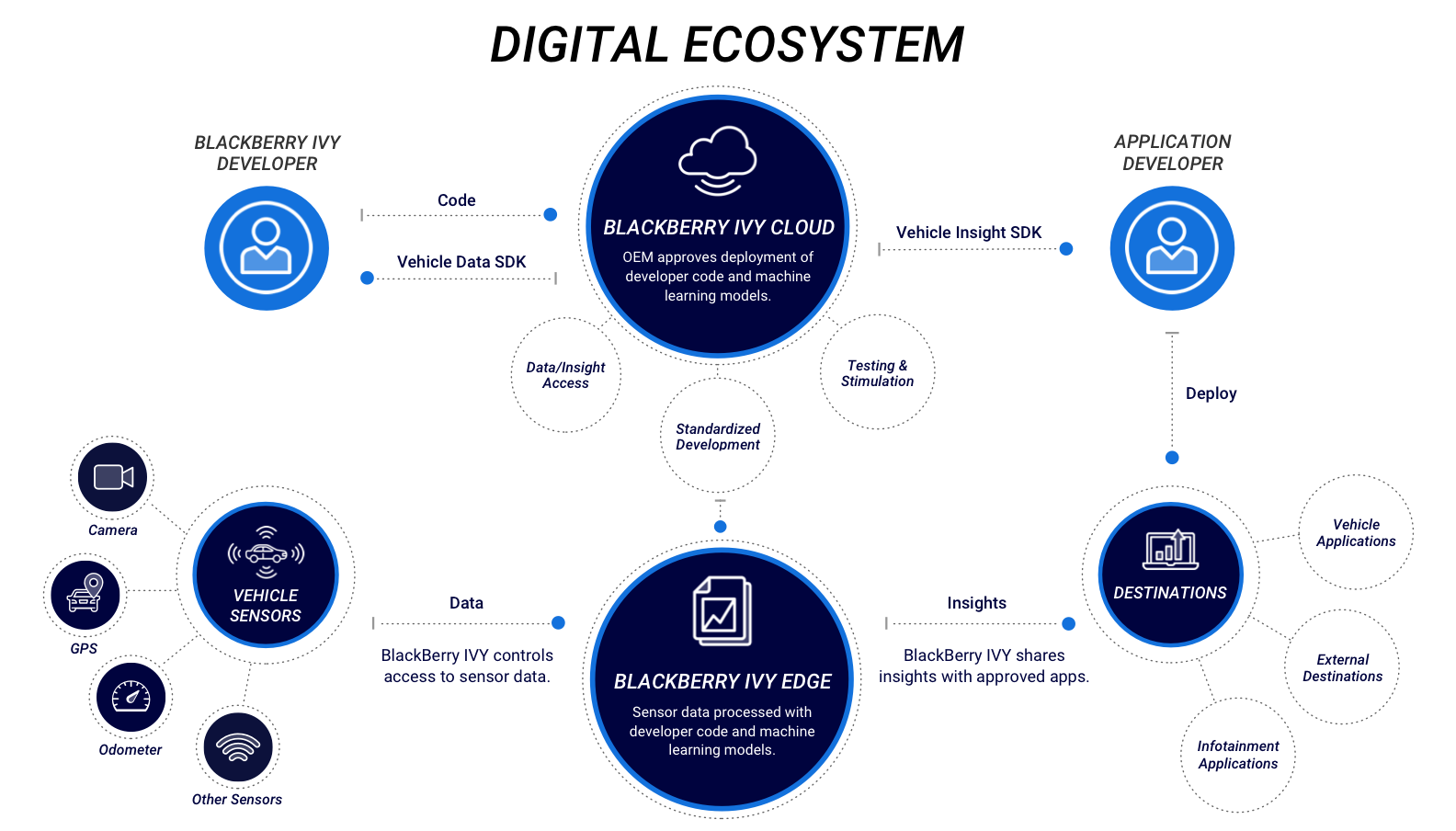
The dashboard in a modern car is no longer a range of switches that point warm air at your feet or your face; a repository for that old mixtape or scratched compact disc. It’s a computer and it looks and feels more like one with every new vehicle. That shift is reflected across every facet of how automotive companies think about the future. When they talk about “services”, for example, they are now as likely to be talking about applications streamed from your vehicle to a phone or the cloud (or vice versa) as they are an oil change or new brake pads.
Yet getting software into cars is a long game. The Daimlers, Fords, Toyotas, VWs of the world do not make decisions overnight. Whilst they have great ambitions to innovate with vehicle and driver data, they are intensely wary of bringing in technology partners that might end up taking most of the data and the new revenues that they hope can be built with that data, in the shape of new digital services. They want partners, but to keep them at arm’s length; they want intimacy, but independence. Relationships here, like everywhere, are hard.
As BlackBerry’s Vito Giallorenzo tells The Stack: “Every large global automaker publicly says [they have] two key objectives: One is to take these slightly archaic systems in their cars, and evolve them to software-based architecture, where they can run services; a bit like we can do today in a phone or in the tablet or in a PC. The industry calls this software-defined vehicles. This software definition then allows them to build services [on top]… They have all publicly stated very, very lofty goals of billions in service revenues on top of the sales of their vehicles that they need to generate per year. They are really at the beginning of that journey.”
From Hypervisors to middleware
BlackBerry has already built extensive automotive relationships. The Canadian firm’s software is in over 215 million vehicles, via its QNX suite of tools and Operating System. Companies use different components of QNX in different ways. e.g. CARIAD, VW’s software company, is using QNX technology components in its unified software platform VW.OS, to underpin advanced driver assistance systems and automated driving functions.
(Modern cars are home to up to a 100 million lines of codes, sometimes running on 100+ ECUs. Automakers have focussed on consolidating multiple ECUs into domain controllers which combine the "infotainment" and instrument cluster systems to run on one ECU. BlackBerry's ubiquitous QNX Hypervisor lets users partition environments of mixed criticality to run on a single ECU which both ensures security and helps reduce cost, size, weight, and power consumption of the system by having fewer hardware boxes interconnected by copper wiring.)

But BlackBerry wants to offer more than this. A hotly contested ground in this emerging world of software-defined vehicles is the all-critical middleware sitting a layer above the OS that automotive companies need to make sense of vehicle data, driver data, or even external city and roads data (all data coming from myriad different components, sensors or inputs), normalise it, and let permitted application developers access it via API.
In 2020 BlackBerry teamed up with AWS to launch something called Blackberry IVY which aims to do just that.
BlackBerry IVY, said AWS’s Andy Jassy and Blackberry’s CEO John Chen in 2020, addresses a “critical data access, collection, and management problem in the automotive industry”.
Announcing the joint project, the two CEOs pointed to the challenges around “thousands of… unique set[s] of proprietary hardware and software components [which] produce data in unique and specialized formats.”
Saying BlackBerry IVY would "support more rapid development of new customer experiences and unlock new revenue streams and business models" they released an early access version of the platform to “select ecosystem partners” in October 2021. BlackBerry remains “focused on IVY design wins [i.e. firm commitments that IVY will ship in X vehicle], which we currently expect to secure in calendar year 2023” executives said this month.
“IVY gives full control to the automakers”
The man driving BlackBerry IVY’s development is Vito Giallorenzo; previously a technical engineer who cut his teeth running security programmes at Cisco before moving into investment banking with Morgan Stanley. Now at BlackBerry as COO, IoT & Head of Corporate Development -- and reporting to CEO John Chen -- he runs corporate development and M&A activities, BlackBerry's IVY Innovation Venture Fund and IVY itself.
Asked why OEMs won’t just build this middleware themselves, he told The Stack on a call: “Abstracting the chipset, the hardware, acceleration of the machine learning models supporting all the tool sets… It takes a lot of work to do to build a platform like that. An automaker would need hundreds of millions of R&D, CapEx investments, to do something that is fundamentally undifferentiated heavy lifting. It’s something that is foundational and needs to work but it doesn't differentiate your service [which is] all the solutions on top of it.”
(BlackBerry points to research from SBD Automotive to make this case in more detail. The company estimated that an OEM would need to invest between $65M and $115 million over ten years to “develop and maintain the most fundamental, non-differentiating cloud and in-vehicle software building blocks for vehicle data and algorithm management – and this is only a small fraction of the overall software investment required.”)

How does AWS fit in and what’s the lock-in risk?
Yet OEMs are, as mentioned, wary of giving away too much early on this journey. They’ve seen telcos fail to build additional services on their infrastructure and others jump in to fill the gap. Many are still wary of the cloud or intent on staying hybrid. How does a joint AWS-BlackBerry product fit into this cagy Weltanschauung?
It must also -- to some -- sound like double vendor-dependency risk spanning the vehicle and the cloud. Does IVY require that vehicle data flows to AWS’s cloud infrastructure? If not, what’s in it for the hyperscaler?
Giallorenzo says: “We knew that automakers are not single cloud. They're very careful about it. While some automakers have preferences, they want to have flexibility. One of the design principles of IVY was that it's not going to be specific to our own operating system and it's not going to be specific to [AWS].
(BlackBerry IVY is interoperable with the Android Automotive OS, which has been making growing inroads into the market: IHS Markit predicts that Android Automotive will have 18% market share by 2027 compared with around 1% currently, while the QNX OS -- which has 14% market share in 2022 -- "will plunge to just over 5% by 2027. This is a direct result of the growth of Android Automotive and Automotive Grade Linux (AGL)."

He adds: “Obviously, we would love that they take our OS and Amazon [would] love them to take AWS, but the automaker will be able to choose.
"IVY has an API that takes the data that is generated by IVY and shares it with a cloud – that can be pointed to AWS or it can be pointed to Microsoft or Google" he clarifies to The Stack.
"The way the data is used from my view is twofold.
“It could be shared directly with an application that can sit in the vehicle, or can sit in a cloud – and IVY is agnostic [about this].
"The application will take the API data and can run in any cloud, or the data can be shared with the data lake of any cloud -- because the classic example is when a solution needs to triangulate data from the vehicle and data from the rest of their infrastructure." (e.g. supply chain data).
How does it aim to monetise BlackBerry IVY?
Asked why it is taking so long to secure firm commitments from partners to use IVY in their vehicles, despite QNX’s success, he told The Stack: “Automotive is a little bit different from other software businesses. You win the business today, and you start getting the equivalent of ARR two or three years down the line.
"They [OEMs] are now shrinking those design cycles: Especially in places like China, we are seeing that down to maybe one year, one-and-half years, and with new architectures, they can update software and introduce new foundational software like IVY after production. So that window is shrinking. But it takes still a bit of time.”
In terms of how it will generate revenue from BlackBerry IVY he says the company is taking two approaches: "Automakers can choose to pay-per-vehicle, like 'all you can eat' -- you use it for as many applications as you want. Or you pay as you go; every time there is an API call, or there is a processing of data -- we have few metering points inside IVY -- then you pay like a few cents. The beauty of all of this is that developers can do it without any knowledge of the complexity of the underlying vehicle systems that that has been the barrier in the past.
"It's very easy for every mediocre developer to build a nice application on these phones. But it's really hard to do it in a vehicle. IVY gives full control to the automakers. They like the fact that IVY is a tool and they have full granular control of which data they expose to which applications and how it's processed. [OEMs] want partners like us who are not after their data and not after their customers; we just provide them tools.”
In a world of grand claims, a championing of -- admittedly complex -- "fundamentally undifferentiated heavy lifting" is somewhat refreshing. Whether AWS and Blackberry's initiative will pay off should be clear in 2023.
BlackBerry's Vito Giallorenzo gives every impression that the company is in it for the long haul.
Asked what the roadmap looks like, two years in, he tells The Stack: "IVY is a big vision. We will grow the list of supported systems, tool sets, hardware, software, we support -- including the automakers' IT back-end infrastructure, to help IVY adoption and make it very easy for automakers to take it. Then we will continue to onboard new solutions. IVY comes prepackaged with applications; we already showcase payments, insurance, predictive maintenance. We will continue to add more as we listen to automakers and partners.
"Our vision is to take it into other domains. IVY is a horizontal platform. There's no reason why it couldn't work in smart cities, medical, industrial infrastructure, we're just focusing on automotive first."
